Coffee is the ultimate beverage.
You’re here because you’re just like us—always seeking the best ways to brew coffee and trying out all the different methods to get the perfect flavor and body that’s just right for you.
The thing is, coffee has been around for ages (literally), and through different cultures and technical innovations in history, we’ve seen so many different ways that coffee can be brewed.
Coffee brewing is a science, just like any form of cooking, baking, or cocktail mixing. It all comes down to ratios, temperatures, volumes, and more.
Let’s go through every individual aspect of coffee brewing together and show you some different ways that coffee can be brewed, while also discussing the best way to get maximum flavor out of every cup without making it too strong.
Brief History Of Coffee Making
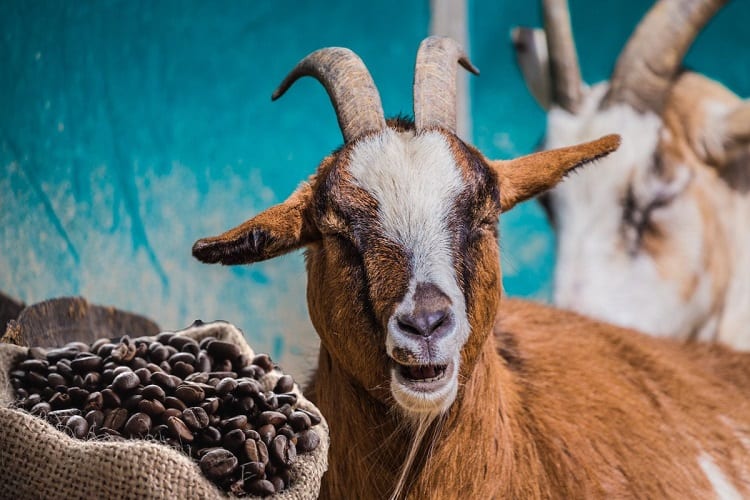
While it can’t be 100% proven, many cultures have long talked about Kaldi, the Ethiopian goat herder who noticed the way that coffee beans affected his goats after they ate them.
That being said, it’s folklore at best. From there, coffee appears in texts dating back to the 15th and 16th centuries, from nations like Austria, England, and France.
The first coffeehouse in England was opened in the late 16th century.
Coffee was imported from Yemen to other countries, and just like the explosion of always-popular tea, coffee became this exotic good that everyone enjoyed, even if their tastes were a bit skewed depending on the brewing methods.
In the 18th century, Italy had over two hundred coffee shops, and had long since been enjoyed in countries like Poland and the Netherlands, where it was considered a luxury.
Coffee then came to the Caribbean Islands in 1720, where seeds were planted that would later sprout over ten thousand coffee plants, some fifty years later.
In the following years, Brazil began independently growing and distributing coffee around the 1820s.
Now, you’ll find that Brazil, Ethiopia, Columbia, and Indonesia provide most of the world’s coffee sources.
These nations have made coffee creation a part of their culture and a hefty section of their workforce.
Think about how scarce coffee was three hundred years ago, when it was considered a luxury, and now if you really wanted to, you could have someone hand you cheap coffee in a foam cup without ever having to get out of your car.
It’s commonplace now, after a long and tedious history of becoming the second-most consumed beverage in the world next to tea.
Types Of Coffee Makers
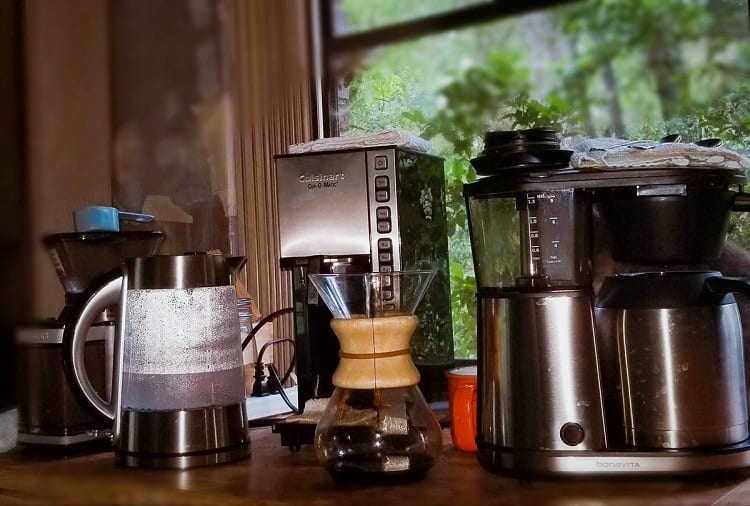
No two coffee makers give you the same brew.
Yes, the idea of running hot water through grinds is the same, but you’ll find a wildly different variety of flavors depending on how you brew your coffee.
Nowadays, we’re used to automatic coffee makers, but manual coffee makers are actually making a pretty big comeback.
We now have the luxury to handpick, grind, and brew gourmet-style coffee in our own home. The question is, how are you going to brew it?
These different types of coffee makers, mixed with the many different roasting methods, flavors, and beans, create a seemingly endless number of possibilities for how you can enjoy coffee.
If you’re currently using an automatic drip coffee maker like most of the world does, consider spending an extra few minutes with these different methods to enhance your coffee experience every single day.
Manual
First, we have manual coffee makers. These aren’t going to do the dirty work for you.
Typically, using pre-ground coffee (unless you’ve ground it up yourself) is frowned upon with manual coffee-making methods.
It’s like getting a new paint job on an old car; it’s not going to do much.
Manual methods require a bit more time from you but also give you the opportunity to dictate the strength and flavor of your coffee when it’s done.
Pour Over
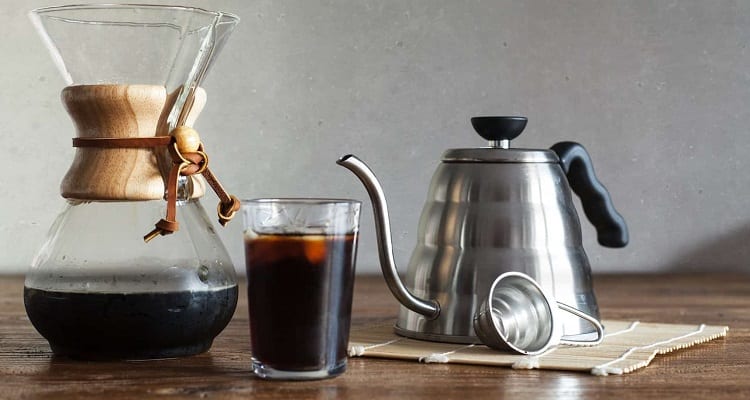
Just like it sounds—it’s you, pouring water over the grinds without the assistance of an automatic system. Pour-over coffee is actually very easy to mess up, which is why it’s not the most popular manual method.
For most pour-over coffee making, if you pour too quickly or don’t pour quickly enough, you can really impact the flavor of the coffee. It’s either going to taste a bit burnt or a bit watery.
That being said, when you learn how to get it just right, it’s like smooth arabica velvet on your lips.
Pour-over coffee is extremely easy to make but usually requires a slightly more coarse grind of coffee.
This is an entirely different ballgame compared to how you’ve been making coffee all along.
French Press
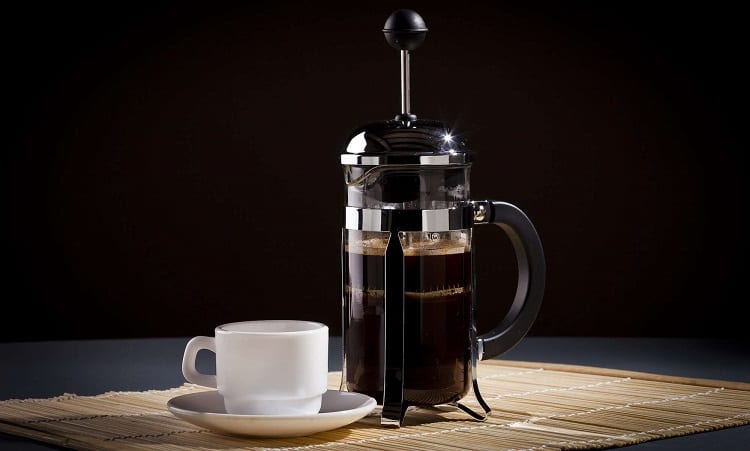
French press coffee (also referred to as piston coffee) is fantastic and very easy to make if you can time it properly.
Pour in your grinds, pour in your hot water from the kettle, and let it be.
French press coffee usually takes about five minutes to fully brew, and at that point, it’s time to push down on the plunger that’s built into the lid.
This uses a rubber gasket along the edges and a very thin filter system in the middle, allowing the liquid to flow through it and grind to get stuck at the bottom.
When you’re finished pushing the plunger down, the circular disc has pressed the coffee grounds to the bottom of the basin.
You can pour confidently, and when the coffee runs dry, you simply dispose of the grinds.
French press coffee makers are usually dirt cheap but keep in mind that once a year, you should switch out the rubber gasket on the outside of that interior disc.
You’ll know that there’s something wrong with it when you get small floater grinds in your coffee. It’s a cheap repair, just something to keep in mind.
Aeropress
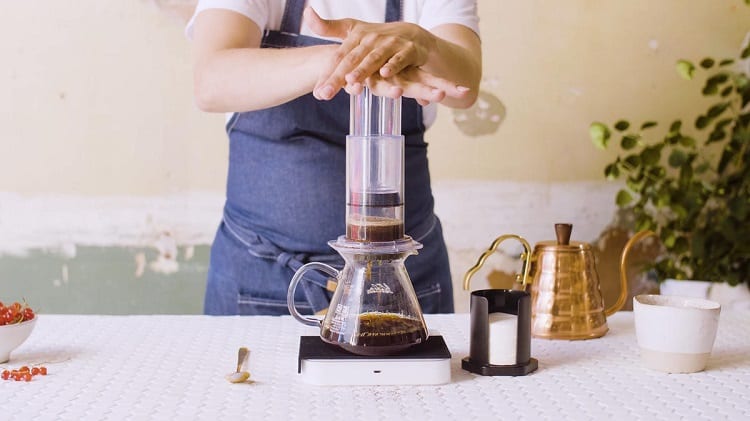
These are often talked about right alongside the French press system because they do share a similar methodology.
You use a plunger-style system, but you have filters in place that help ensure there are no grinds that make it through to your smooth, finished cup.
With a French Press, you need coarser grinds (which is why it takes five minutes to brew).
Because Aeropress uses thick filters, you’re actually supposed to grind your coffee up more finely and slowly push it through the filter over the course of two minutes.
It’s basically seen as the evolution of the French press, especially since it gives more consistency and requires less time.
The only catch is that you have to buy Aeropress filters, and they’re not like a packet of drip coffee machine filters that you have for 400+ days.
They’re a bit pricier, but it’s often worth the lessened brewing time.
Cold Brew Coffee Maker
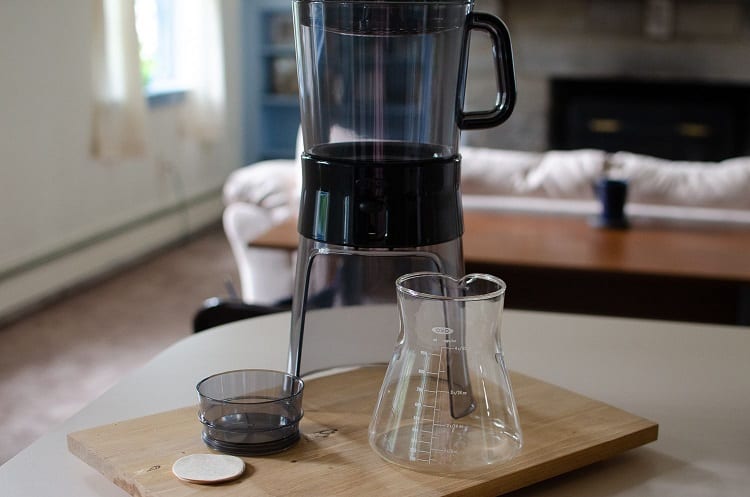
If you’re a diehard iced coffee drinker, like it’s 8° F in Boston and you’re sipping iced coffee (because that’s what we do), then cold brew is basically an upgraded version of most single-serve coffee places and how they make iced coffee.
An iced coffee brewed uses cold water and either direct grounds or a tea bag-style sack to soak up the coffee flavor.
Think of a French press but with the grinds just floating around, or a big tea bag hanging inside so there’s no need to filter it afterward.
Cold brew takes about twelve to eighteen hours to make on average because the process is just a lot slower (hence why most single-serve QSR coffee shops don’t use this method; it takes up too much time).
Cold brew is less acidic, often stronger, and can be heated up after it’s done brewing if you want to enjoy it hot.
Stovetop Coffee Maker
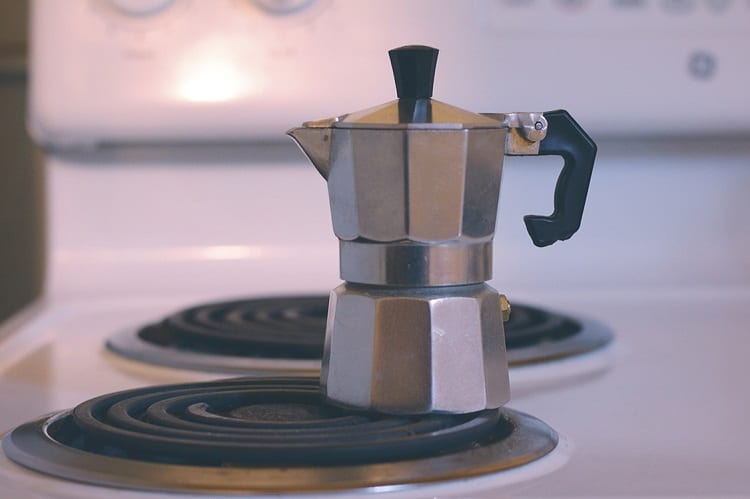
Just like a kettle, only used to make coffee instead of tea. You might sometimes see these referred to as a Moka pot, which can either be stovetop or come with an electric heating plate base.
When you use a Moka pot, you’re putting the grinds directly into the water and bringing them to a boil for one to three minutes, on average.
Most coffee doesn’t exceed a heat of about 200°F during the brewing process because it tends to leave a burnt taste in coffee.
Nearly every place that sells single-serve coffee won’t allow their plates to meet 212° F, the boiling point.
Stovetop coffee is generally much stronger than drip feed systems. Some would call it an acquired taste.
Siphon Coffee Makers
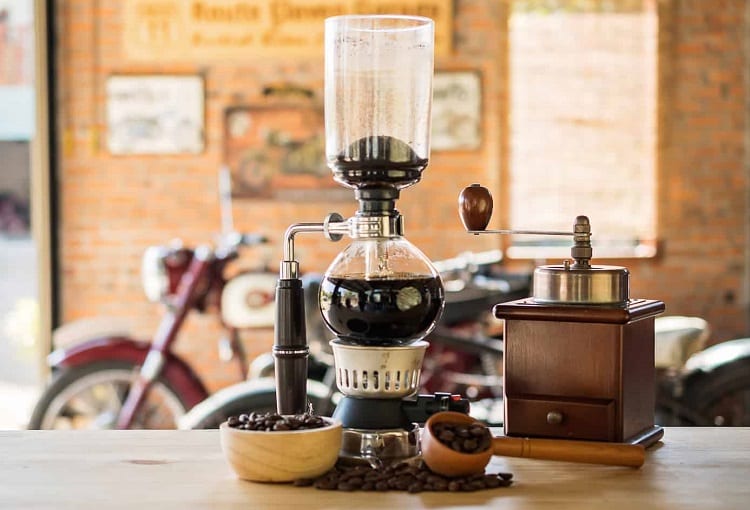
By far the most aesthetic way coffee has been brewed. It’s like you’re making a science experiment that you get to drink.
You have two glass bowls, with a tube connecting them in the middle like a caricature of an hourglass.
Using a small amount of water in the bottom chamber, heat it gently on a Bunsen burner until it begins to boil.
In the top chamber, coffee grounds sit with the remaining amount of water, and the filter that plugs up the central pipe allows all that heat to come in.
While it boils, you adjust the heat to make sure it doesn’t get too hot, and when you kill the heat, the vacuum you’ve created sucks all the liquid back through the filter into your bottom half.
Remove the top part of your siphon coffee filter and dispose of the grounds/filter.
Filters are pricey for this, but siphon coffee has a distinctly rich flavor that you cannot beat with other forms of manual coffee makers.
Automatic
Flip a switch, press a button, leave it plugged in, or set it up to make your coffee for you as your feet hit the floor in the morning.
Automatic coffee makers are basically all we see nowadays, so it’s no surprise that they’re the most popular option.
After all, for some of us, those extra minutes in the morning make a big deal.
You might have an automatic coffee maker in your kitchen right now. It’s likely a drip maker, which is what we’ll talk about first.
If you’re feeling adventurous, then it’s time to grab a different coffee maker and give it a whirl.
Drip Coffee maker
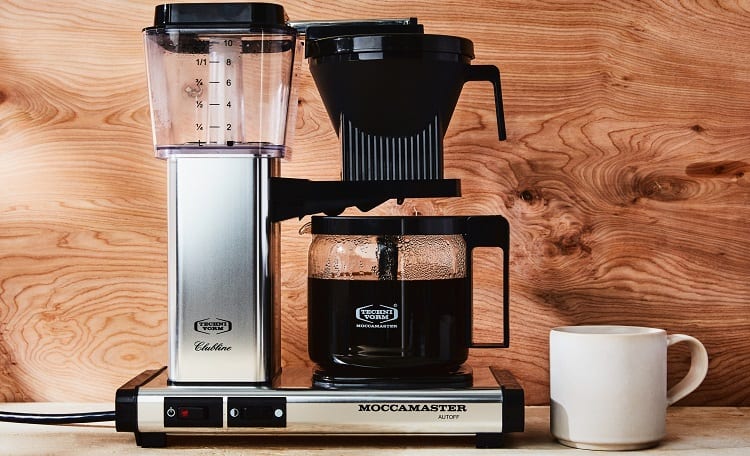
The most common type of coffee maker in the world. The standard coffee machine is in most homes across America and uses a simple drip option to achieve coffee bliss.
With a water tank in the bank and a hose that goes to the brew basket, water is heated and fed through a spray head to come down on the grinds and run the runoff (drinkable coffee) through a filtration system.
From there, the bottom of the brew basket fills up with coffee and runs through a simple hole in the bottom, usually activated by a spring that’s pushed into place by the bulb on top of the coffee pot.
There’s almost no control with these machines. They’re inexpensive, sure, but you can’t tweak settings or really do much to alter the temperature of your coffee.
The most common issue with drip coffee makers is that the hot plate, which is used to warm the coffee, is constantly heating up the finished product.
Leaving your pot on the burner for more than a few minutes could result in a burnt taste.
Thermal Coffee Maker
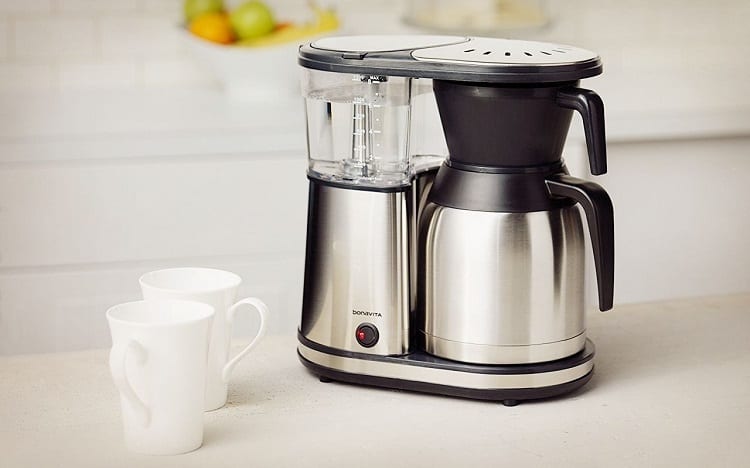
Thermal coffee makers are very similar to drip systems.
They usually include a basin, brew basket, heating element, and such, but they have two key differences: the actual coffee pot and the lack of a hot plate.
Thermal coffee makers are often used to make decaf coffee, which tends to sour quickly if left unattended.
Using the same methods of a thermos on the inside of the insulated, solid pot, you’re able to use the heat of the coffee to maintain a base temperature.
These usually extend the shelf life of hot coffee by up to two hours before it’s simply lukewarm, though there are some thermal pots that can hold heat for longer.
Most of the time, you’re going to see thermal coffee stations with programmable features, like timers and brew strength options.
You don’t just put a thermal pot on a normal, single-button operation coffee maker and call it a day.
Espresso Machines
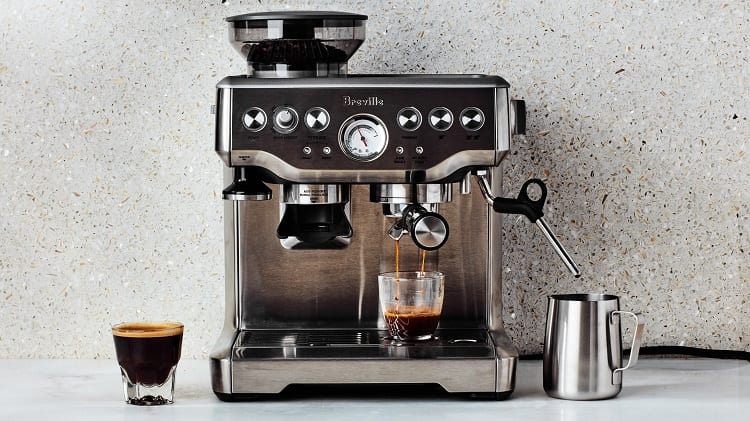
Espresso is like the essence of coffee in a concentrated shot. One shot of espresso contains the same amount—if not more—caffeine as a ten-ounce cup of hot coffee.
And that’s because of the way it’s done.
Espresso machines are high-grade pieces of kitchen gear that use a mix of heat and pressure to get every last drop of coffee goodness out of espresso beans.
Your pressurized espresso usually leaves through a single spout on the front.
Some espresso machines are going to have a steam wand and possibly a milk frothing tank to make it a full-blown latte and cappuccino haven.
Many people, for in-home use, will get an espresso machine without those features and purchase a milk frother separately.
Not only is it generally cheaper to do this, but it’s better for maintaining the temperature of your milk and reducing the amount of mess that’s usually made.
Percolators
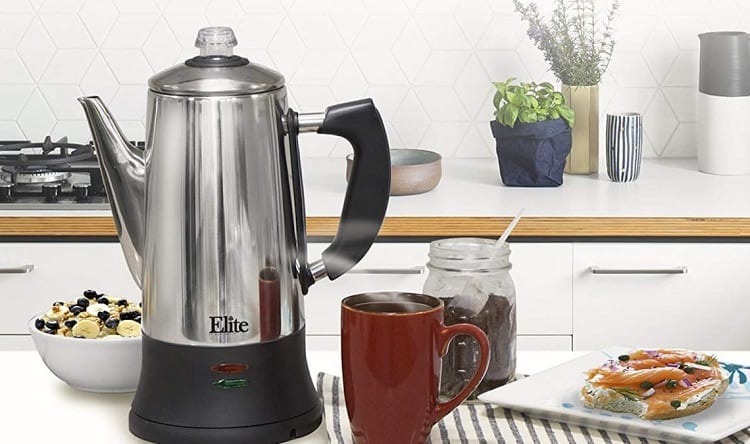
Percolators give you a truly unique way to enjoy coffee. You fill up the basin with water, and then on top of the central tube, you put your brew basket above the water level.
When the heat source at the bottom of the percolator starts to boil the water, it bubbles up through the central tube and splashes down onto the coffee grounds.
This process continues until you stop it.
Basically, the coffee drips down into the water reservoir and ends up coming back through the tube until a thorough blend of coffee is achieved.
This can often lead to over-extraction, where you get a lot of thick coffee, tons of boldness, but a lack of actual coffee flavor.
Percolators create a similar taste of dark roast coffee through a drip maker.
Coffee Stages
Coffee has a long life before it reaches your cup.
There’s a lot that goes into growing, roasting, and grinding your coffee that all affects its flavor and caffeine content.
Let’s take a look at the five main stages, from the second the seed is planted in the soil to when you finish the last drop in your cup.
Pre-Harvest
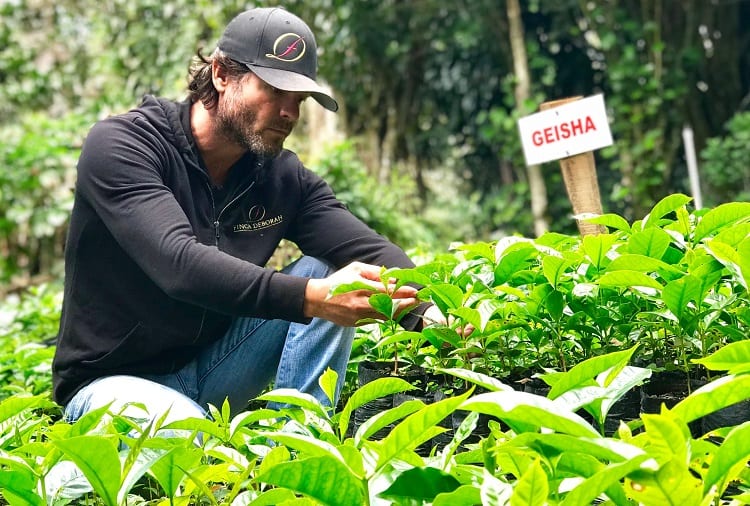
The seed is planted. It starts out there, and it takes about three to five years before the plant grows enough to start bearing fruit.
Yes, your coffee is actually a fruit… sort of. You get what’s called a coffee cherry, which is a bright red berry that holds coffee beans on the inside as seeds.
Yes, we’re drinking seed juice when we drink coffee.
A coffee plant can live for fifty to sixty years on average, though some are known to live to be one hundred years old.
You get a harvest once a year when the coffee plant has fully matured.
During the pre-harvest season, nine months in total are spent nurturing these plants and keeping them alive while feeding them the proper nutrition.
Then, it becomes time to harvest for the remaining three months.
Beans
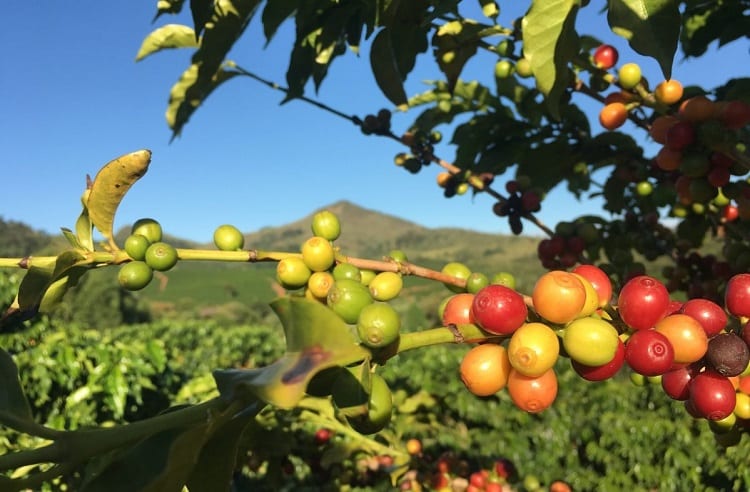
Coffee beans are green. Did you know that?
When they come out of the bright red cherries, they’re completed green before they’re roasted.
Extracting coffee beans takes three months in total because no two plants are going to produce fruit at the same time.
At some point, these beans need to be dried.
This can either be done chemically, or they’ll be laid out in big tarps under the hot sun in places like Brazil and Ethiopia, where the remaining pulp from the coffee cherry will be cleaned off of them.
Not all of these coffee beans are going to make it to the next stage, either.
If coffee beans are too small, they’re considered to be highly acidic and aren’t necessarily delectable. Some beans are discarded, and some are sold and sent to the roasters.
Roasting
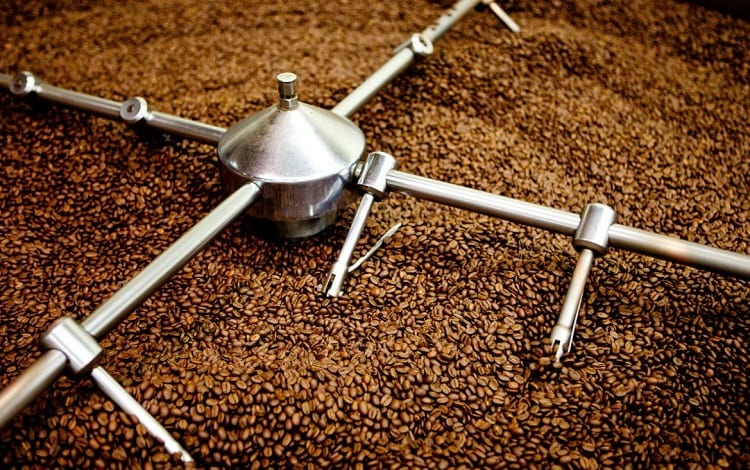
This is where the magic happens. Here, depending on how the beans are roasted, you’ll either get coffee beans or espresso beans.
Roasting coffee beans is a long process.
During this stage, each bean may lose up to 20% of its individual weight, so roasters are likely only getting an 80-85% return on the weight of beans that end up going into the roasting machines.
During coffee roasting, oils are excreted from the beans, which give them that greasy feeling when you reach into your bag in the morning and grind them up.
You have nine different ways that coffee beans can be roasted, from light to the darkest of dark roasts.
Roasting coffee does something funny to the beans, though—it strips away many of the health benefits.
If you’ve seen a rise in articles and information on green coffee beans in recent years, it’s because brewing coffee with green coffee beans actually has more antioxidants and other vitamins.
The thing is, it’s bitter, and it’s actually expensive to buy green coffee beans since it’s a very niche area.
Grinding
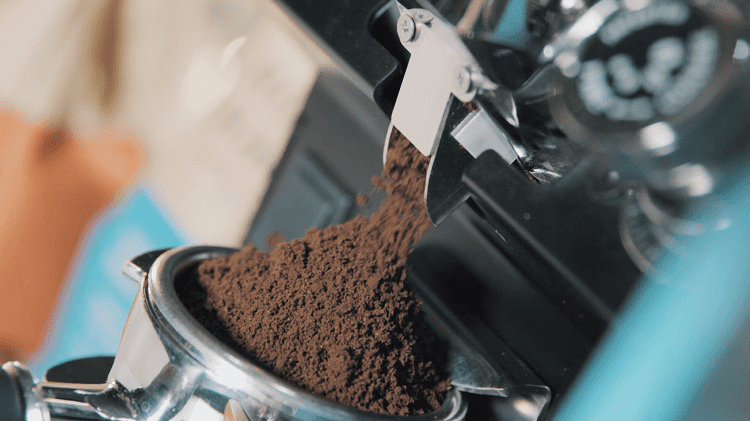
This part is usually done in bulk by the roasting companies or by another company that buys from the roasteries (there’s a lot of middlemen in the coffee industry).
Grinding has to follow very rigorous specifications, no matter who’s doing it. The grind size of coffee matters almost as much as how they’re roasted.
Too large, and it’s not going to give you enough flavor (or they’ll be perfect for a French press); too fine, and it loses its flavor during packaging and transportation.
For quality, the rule of thumb is that you should use your coffee grinds within fifteen minutes of them being ground for the best possible flavor.
Imagine all the time spent packaging, the time it sits on the shelf, and the fact that you’ve had an open bag of pre-ground coffee for a few weeks before you get to the bottom.
Grinding should be done at home.
Blending
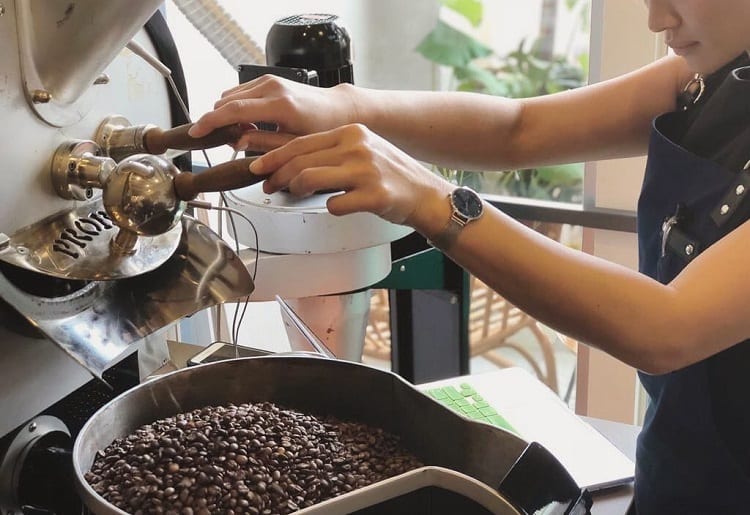
When you see “A Unique Coffee Blend” on packages at the store, that means they’re using different beans from different origins, sometimes a blend of arabica and robusta, for instance.
They blend these together to create unique flavors.
You might see a percentage such as 55% arabica, and 45% robusta, which is going to taste far different from 100% Arabica that’s simply sourced from two different locations.
Blending has so many combinations that just about any company can make its own original blend.
This is why there are thousands of coffee brands out there; they can all somehow bring something unique to the table, even if it’s only differentiated from a competitor by a single flavor note.
You could blend your own coffee at home. It’s a ton of fun to do, and so long as you’re blending beans and not pre-ground coffee, you can grind a unique cup every single time.
Try a mix of arabica and robusta from a total of four different brands.
Buy one pound of each type, and throw them all together in a big glass canister with a rubber gasket seal on the lid. You’ll be happy you did.
How Specialty Beverages Affect Coffee Flavors
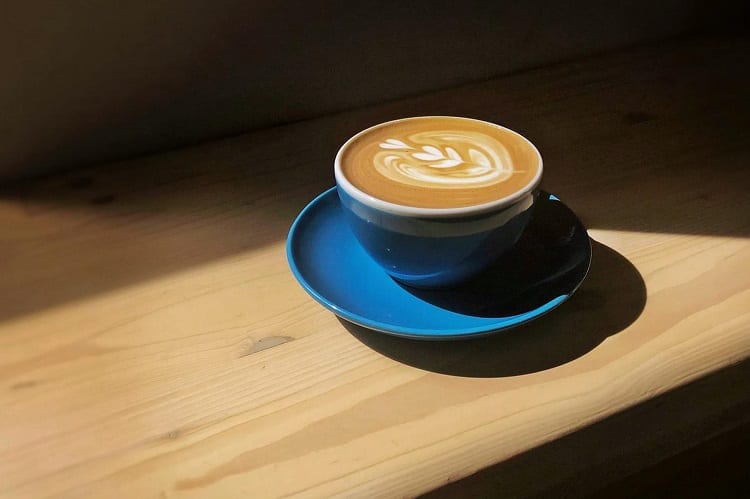
Specialty coffee can be defined as anything that’s done outside of the actual coffee bean roasting/grinding process that isn’t just simple brewing.
A latte would be considered a specialty beverage. Technically, anything that you add to coffee makes it a specialty beverage.
So how do these affect the flavor of your coffee?
Your coffee is acidic by nature.
If you’ve ever sipped a hot cup of black coffee versus a cup of coffee with cream and sugar, then you know two things: one is stronger than the other, and regardless of the presence of additives, you still get the flavor of coffee punching through.
Coffee is not naturally sweet. It contains no sugar whatsoever, making it the ultimate way to stimulate your brain without adding processed white sugar into anything.
Coffee comes with a ton of natural health benefits, including fighting type II diabetes, lowering your chance of Alzheimer’s and dementia, lowering blood sugar, and being the number one source of antioxidants in the western world.
When you add creamers, milk, sugar, and flavors to your coffee, it can negate some of these effects. You can’t exactly fight your blood sugar while ingesting more sugar.
As far as affecting flavor goes, if you’re throwing in too many additives (excessive sugar, strong multiple flavors), then you’re undercutting the whole point of having high-quality, freshly ground coffee.
The truth is, the majority of people don’t actually like the taste of coffee straight up. They prefer to have it with some form of an additive, even if it’s just a splash of milk.
In short, the more that your coffee can be defined as a specialty beverage, the fewer health benefits come through and the more of the actual coffee flavor gets lost.
How To Get The Best Flavor Out Of Every Cup
There are so many different ways your coffee flavor can be affected.
To keep your brew simple and true, follow these tips and enhance your coffee-drinking experience.
Clean Your Coffee Maker
We’re not saying that you have a dirty coffee maker, but if you’re using a drip machine with a spray head, I urge you to go and wipe your finger across it right now.
You’re not going to like what you see. It only takes a few brews for these to get gross, or the hard-to-reach spots in a siphon coffee maker, or the gasket of a French press.
All of this grime from coffee oil will impact flavor and quality if you don’t consistently clean your equipment.
Freshly Grind Beans Yourself
When you use pre-ground coffee, it just doesn’t come outright.
Flavor diminishes, and that’s not just a matter of opinion—your coffee oxidizes quicker because instead of being one bean, it’s thousands of coffee grains.
That means oxygen touches every individual grind (for the most part) instead of the surface of the bean.
Use Cold, Filtered Water When Brewing
Most water in America is hard water, meaning there are a lot of minerals but also a lot of additives like chlorine and fluoride.
Use filtered water instead of just running from the tap. You can either buy a pitcher and a year’s worth of refills for about sixty dollars or get a clip-on filter that is attached right to your sink’s faucet.
Either way, filtered water always delivers a better taste. You’re just getting coffee, not whatever your city decided to throw in the water.
Using an activated carbon or charcoal filter is going to be your best bet; just get familiar with your filtration system before you start making coffee from it.
Diversify Your Coffee Bean Selection
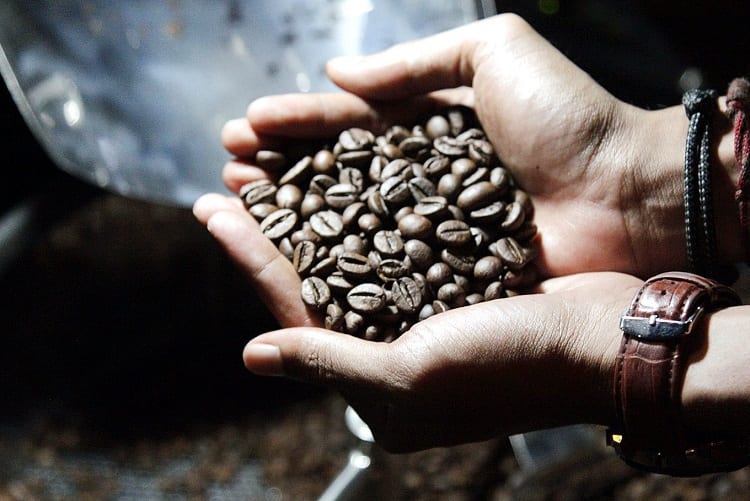
Quite simply, you’re getting sick of the same old, same old. When you have the same flavored beans or the exact same brand over and over again, it’s going to get a bit tiring.
Switch up the beans you use in terms of your favorite brands, but also try to opt for espresso and arabica bean blends, or go straight to 100% robusta beans to throw you out of your comfort zone.
Statistically speaking, it’s highly unlikely that you’ve found your favorite way to have coffee. Keep looking; there’s another, possibly better way for you to personally enjoy coffee.
Master The Brew, Master Your Morning
Did you find a new way to brew your coffee?
Are you willing to ditch that twenty-dollar automatic drip feed system and try your hand at something a little different?
Get out of your comfort zone. Brew your coffee differently. See what it does to your morning routine, and learn how to make hand crafted coffees that just can’t be beaten.
Brewing at home is not only effective, but it’s economical as well. Investing in a good homebrewing system will save you money in the long haul over buying it every day on your way to work.